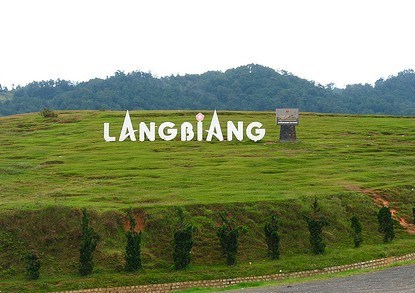Development plan for Langbiang Biosphere Reserve approved
The Central Highlands province of Lam Dong has recently approved the development and management plan of the Langbiang Biosphere Reserve in five years from 2018.
 Langbiang Biosphere was added to the World Network of Biosphere Reserves of the International Co-ordinating Council of UNESCO's Man and the Biosphere Programme in June, 2015. (Photo: ig-vast.ac.vn)
Langbiang Biosphere was added to the World Network of Biosphere Reserves of the International Co-ordinating Council of UNESCO's Man and the Biosphere Programme in June, 2015. (Photo: ig-vast.ac.vn)Lam Dong (VNA) – The Central Highlands province of Lam Dong has recently approved the development and management plan of the Langbiang Biosphere Reserve in five years from 2018.
Under the plan, the management board of the reserve will carry out various programmes to protect natural resources and cultural values as well as support economic and tourism development.
Total capital for the projects will be 49 billion VND (2.15 million USD), of which 16 billion VND (704,000 USD) comes from the official development assistance.
The Langbiang Biosphere was added to the World Network of Biosphere Reserves of the International Co-ordinating Council of UNESCO's Man and the Biosphere Programme (MAB) in June, 2015.
The reserve covers an area of 275,439 hectares to the north of Lam Dong, with its core area of 56,000ha encompassing Bi Dup-Nui Ba National Park. An 86,000ha buffer zone, in which human settlements are permitted, surrounds the reserve.
The area is home to more than 2,000 flora species and nearly 400 fauna species, of which 153 species are named in Viet Nam's Red Book, and 154 are included in the Red List of the International Union for Conservation of Nature.
The reserve is located in the famed Da Lat city at the highest altitude, compared to the country's other biosphere reserves, with Bidoup peak measuring 2,287m high in Da Nhim village. The highest Bidoup peak is known as the Roof of the Central Highlands.
Moreover, it has been highly praised by tourists and experts due to its biodiversity, special natural landscapes with high mountains and beautiful waterfalls, and its rich culture displayed by local inhabitants from different ethnic groups.
Alongside Lang Biang, other Vietnam’s UNESCO-recognised biosphere reserves are Can Gio Mangrove, Cat Ba, Cat Tien, Cu Lao Cham-Hoi An, Kien Giang, Cape Ca Mau, the Song Hong (Red River) Delta and Western Nghe An.-VNA













